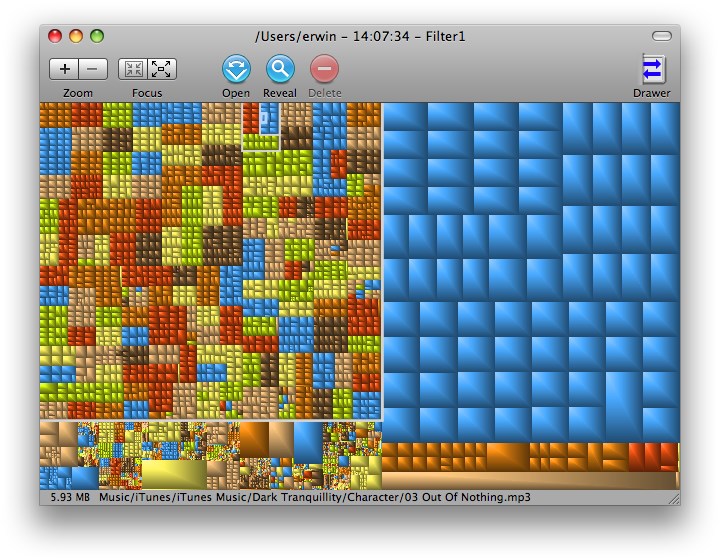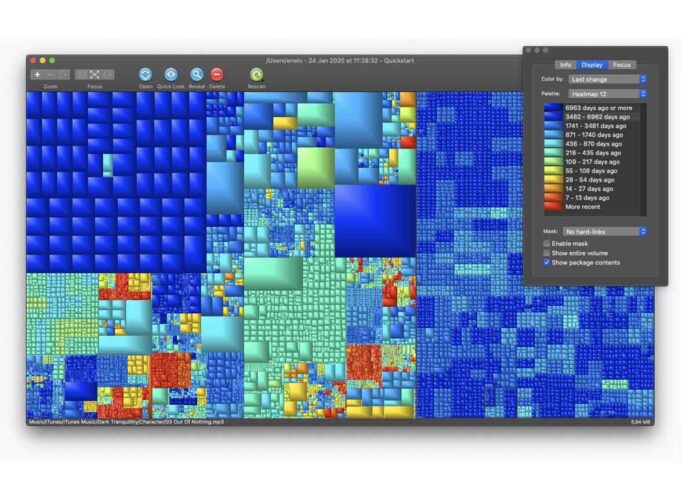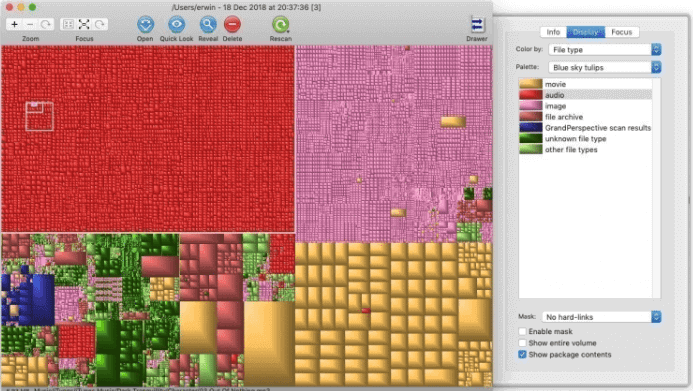

- #Grandperspective miscellaneous used space install#
- #Grandperspective miscellaneous used space portable#
- #Grandperspective miscellaneous used space free#
☞ Enter the first few letters of its name into a Spotlight search. Launch the built-in Terminal application in any of the following ways: Sudo /Applications/GrandPerspective.app/Contents/MacOS/GrandPerspective Sudo /Applications/OmniDiskSweeper.app/Contents/MacOS/OmniDiskSweeper

Triple-click anywhere in the corresponding line of text below on this page to select it, then copy the selected text to the Clipboard by pressing the key combination command-C:
#Grandperspective miscellaneous used space install#
Install the app you downloaded in the Applications folder as usual. The administrator account is the one that was created automatically when you first set up the computer. If you have more than one user account, make sure you're logged in as an administrator. To see everything, you have to run it as root. ODS or GP can't see the whole filesystem when you run it just by double-clicking it only sees files that you have permission to read. Proceed further only if the problem isn't solved by the above steps. Any changes to a photo library must be made from within the application that created it. If you're running an older OS version, use GP.ĭeleting files inside an iPhoto or Aperture library will corrupt the library. Note that ODS only works with OS X 10.8 or later. That means you have multiple backups, not just one. You can also delete files with it, but don't do that unless you're sure that you know what you're deleting and that all data is safely backed up. You can more effectively use a tool such as OmniDiskSweeper (ODS) or GrandPerspective (GP) to explore the volume and find out what's taking up the space.
#Grandperspective miscellaneous used space free#
See this support article for some simple ways to free up storage space. If you followed bad advice to disable local snapshots by running a shell command, you may have ended up with a lot of data in the Other category. You ordinarily don't need to, and should not, delete local snapshots yourself. The snapshots are automatically deleted when they expire or when free space falls below a certain level. In the Storage display of System Information, local snapshots are shown as Backups.

The space occupied by local snapshots is reported as available by the Finder, and should be considered as such.
#Grandperspective miscellaneous used space portable#
When Time Machine backs up a portable Mac, some of the free space will be used to make local snapshots, which are backup copies of recently deleted files. Available storage space that you'll never use is wasted space. There is little or no performance advantage to having more available space than the minimum Apple recommends. You also need enough space left over to allow for growth of the data. That will temporarily free up some space.Īccording to Apple documentation, you need at least 9 GB of available space on the startup volume (as shown in the Finder Info window) for normal operation. If you use iPhoto, empty its internal Trash first:ĭo the same in other applications, such as Aperture, that have an internal Trash feature. If the Storage display seems to be inaccurate, try rebuilding the Spotlight index.Įmpty the Trash if you haven't already done so. For information about the Other category in the Storage display, see this support article.


 0 kommentar(er)
0 kommentar(er)
